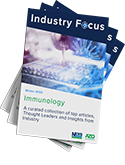In a recent study published in BMC Infectious Diseases, researchers explored the eradication rates of Helicobacter pylori utilizing levofloxacin and clarithromycin-based regimens in patients with prior coronavirus disease 2019 (COVID-19) therapy.

Background
Helicobacter pylori (H. pylori) affects half of the world's population. It is regarded as the primary organism responsible for chronic gastritis, several stomach cancers, and peptic ulcer disease. It has also been linked to extraintestinal disorders, such as iron deficiency anemia resistant to treatment, vitamin B12 insufficiency, and immune thrombocytopenic purpura. H. pylori eradication rates may be affected by antibiotic usage during the COVID-19 pandemic.
About the study
In the present study, researchers assessed the efficacy of clarithromycin as compared to levofloxacin-based therapies for H. pylori treatment in antibiotic-naive individuals after the COVID-19 pandemic.
The study involved a randomized control trial undertaken from 21 March 2021 to 30 September 2021, with patients recruited from the outpatient centers of Alexandria University hospitals and those referred by doctors working in outpatient and inpatient facilities. Eligible participants included patients aged between 18 and 65 years who were newly diagnosed with H. pylori infection and had previously been treated for COVID-19. The diagnosis was made according to a positive H. pylori stool antigen, rapid urease test, urea breath test, or H. pylori detection during the histological analysis of stomach biopsies.
The test was performed on individuals with either peptic ulcer, prior history of peptic ulcer, history or presence of gastric cancer, dyspepsia, chronic aspirin or painkiller use, and endoscopy history for assessment of upper gastrointestinal (GI) symptoms. Each patient's primary presenting complaint was recorded. The first group was treated with amoxicillin, clarithromycin, and esomeprazole, while the second group was administered esomeprazole, levofloxacin, and amoxicillin.
Immunology eBook

All patients were provided comprehensive historical data, including demographic information and social history of alcohol or smoking intake, as well as comprehensive clinical and laboratory examinations. Patient compliance was estimated by enumerating the remaining tablets at predetermined intervals. All patients were required to answer a questionnaire regarding adverse drug reactions. The severity of each symptom was rated between absence (0) and severe (3). After six to eight weeks of treatment, a minimum of four weeks after the cessation of antimicrobials, and a minimum of two weeks without PPI administration, the team evaluated the eradication of H. pylori.
Results
The study involved a total of 270 participants, including 135 persons in each arm. Almost 19 patients from the clarithromycin cohort and 18 patients from the levofloxacin cohort discontinued treatment within two to four days due to adverse outcomes or were lost to follow-up prior to evaluation of H. pylori eradication. Subsequently, 116 participants from the clarithromycin cohort and 117 participants from the levofloxacin group were evaluated.
The average age of the participants was 41.9±13.0 years and included 58.8% men, 63.4% married, 88.0% residents of metropolitan areas, and 60.1% having no history of chronic disorders. The rest of the patients exhibited over 80% compliance. The team noted no statistically remarkable difference between the levofloxacin- and clarithromycin-based regimens in terms of baseline features, the primary presenting complaint as well as the diagnostic test employed. Almost 25.5% of the patients investigated were smokers, whereas none of them reported drinking alcohol.
The overall H. pylori eradication response rate was 69.53%. The intention-to-treat (ITT) and per-protocol (PP) analyses showed that patients treated with the levofloxacin-based regimen exhibited a treatment response of 64.44% and 74.36%. In comparison, those treated with the clarithromycin-based regimen had a treatment response of 55.6% and 64.66%, respectively. However, these differences did not have statistical significance. Furthermore, the team noted no statistically considerable variation between the adverse effects reported by the two treatment groups.
Conclusion
The study findings showed that among participants with a history of prior COVID-19 treatment, both levofloxacin- and clarithromycin-based regimens resulted in lower-than-acceptable eradication rates.
The researchers believe this finding should be cause for concern regarding the rise of antibiotic resistance among these individuals and the population. This indicated that the growing resistance could negatively influence H. pylori treatment costs and raise the risk of H. pylori-related illnesses.
To explain the precise mechanism of antibiotic resistance against H. pylori in such patients, additional research is necessary. In light of the increasing prevalence of antibiotic resistance, this research can aid policymakers in determining the most cost-effective approach for H. pylori therapy.
- Kamal, A. et al. (2023) "Helicobacter pylori eradication rates using clarithromycin and levofloxacin-based regimens in patients with previous COVID-19 treatment: a randomized clinical trial", BMC Infectious Diseases, 23(1). doi: 10.1186/s12879-023-07993-8. https://bmcinfectdis.biomedcentral.com/articles/10.1186/s12879-023-07993-8
Posted in: Medical Science News | Medical Research News | Disease/Infection News
Tags: Alcohol, Amoxicillin, Anemia, Antibiotic, Antibiotic Resistance, Antigen, Aspirin, Cancer, Chronic, Clinical Trial, Coronavirus, Coronavirus Disease COVID-19, covid-19, Diagnostic, Dyspepsia, Efficacy, Endoscopy, Esomeprazole, Gastric Cancer, Gastritis, Helicobacter pylori, Immune Thrombocytopenic Purpura, Infectious Diseases, Iron Deficiency, Laboratory, Painkiller, Pandemic, Peptic Ulcer, Research, Smoking, Stomach, Ulcer, Vitamin B12

Written by
Bhavana Kunkalikar
Bhavana Kunkalikar is a medical writer based in Goa, India. Her academic background is in Pharmaceutical sciences and she holds a Bachelor's degree in Pharmacy. Her educational background allowed her to foster an interest in anatomical and physiological sciences. Her college project work based on ‘The manifestations and causes of sickle cell anemia’ formed the stepping stone to a life-long fascination with human pathophysiology.
Source: Read Full Article





